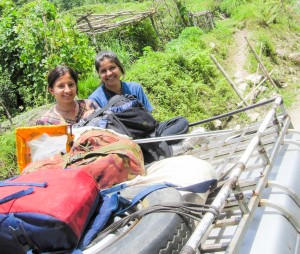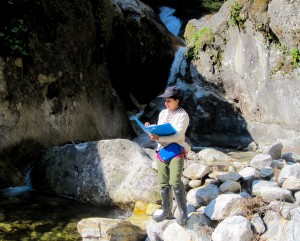The rivers and streams of the Himalayan region are most vulnerable to climate change and are likely to affect all freshwater ecosystems and their fauna. Aquatic organisms have the potential to reflect all sources of disturbances to which they are exposed over time, such as environmental change, climate change, and anthropogenic change. Benthic macroinvertebrates are sensitive to changes in temperature, precipitation, and the associated flow regimes, which make them particularly responsive to the effects of climate change.
This was basically a baseline study on the biological assessment of fifteen different rivers from 700m to 3700m altitudes, in which I used macroinvertebrates as a tool to assess the health status of rivers/ stream system in two different watersheds.
Research includes
- Hydro-meteorological assessment of the study sites
- Mean monthly temperature and precipitation data from the last 30 years was assessed.
- Biological Assessment
- Multi-habitat sampling approach was applied for macroinvertebrate sampling.
- Altitudinal distribution from 700m to 3700m of macroinvertebrates was assessed.
- Temperature tolerance and intolerance was categorized.
- Water Quality Assessment
- Various physical and chemical parameters of each stream was analyzed.
- Coliform was assessed.
- Habitat Assessment
- Stream corridor survey.
- Watershed Assessment
Supervised By |
|
Supervisor: Dr. Subodh Sharma Department of Environmental Science and Engineering, Kathmandu University, Dhulikhel, Kavre, Nepal |
Research Funded By |
| Nepal Academy of Science and Technology |





